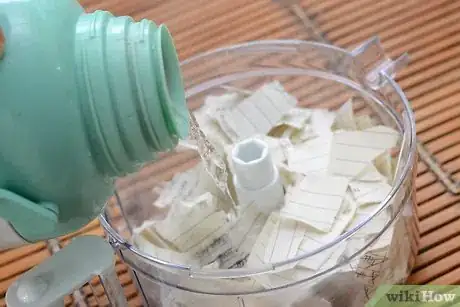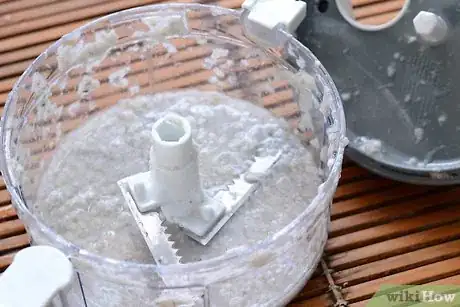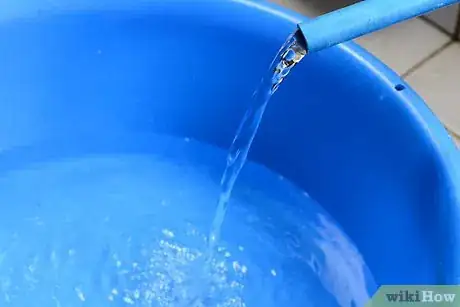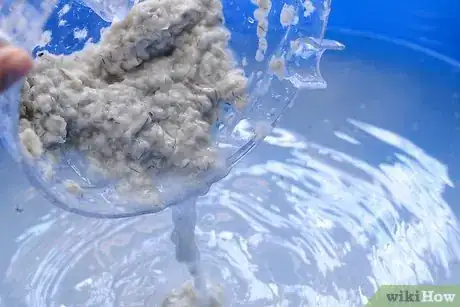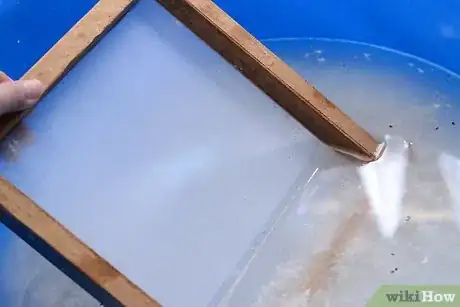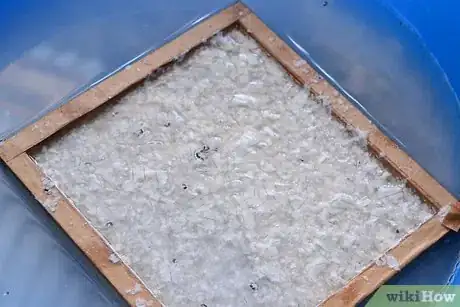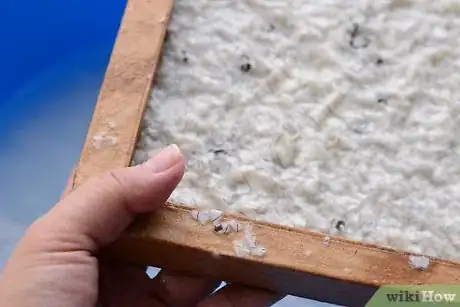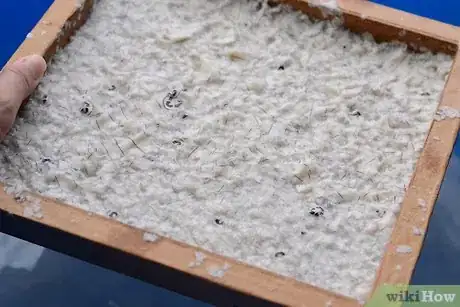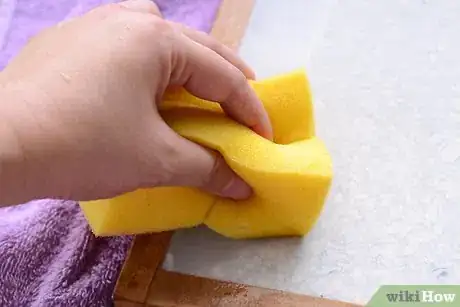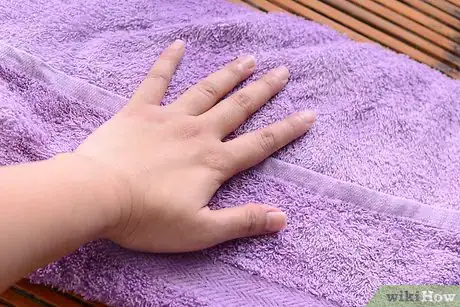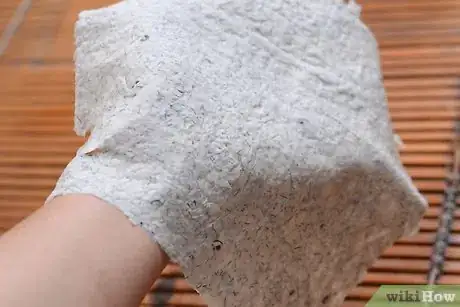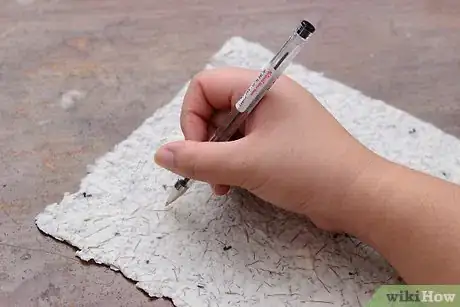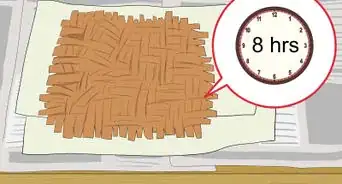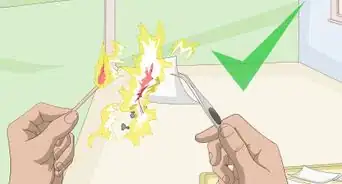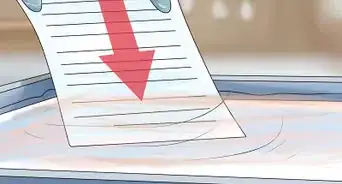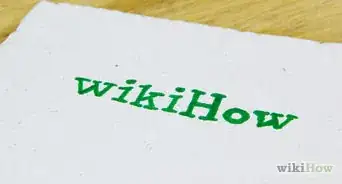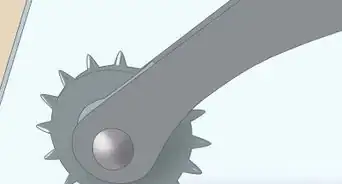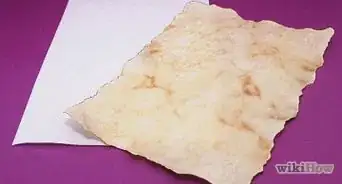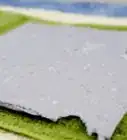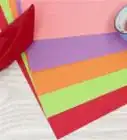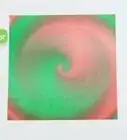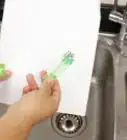wikiHow is a “wiki,” similar to Wikipedia, which means that many of our articles are co-written by multiple authors. To create this article, 31 people, some anonymous, worked to edit and improve it over time.
This article has been viewed 140,817 times.
Learn more...
Recycle your old scrap paper by making it into interesting, one-of-a-kind paper paper that will make nifty notepaper, unique wrapping paper, or will enhance paper crafts you might be inspired to make. You'll need scrap paper, a blender or food processor, a fairly deep tub or basin (six inches deep, minimum), a mold and deckle (see "Tips" for making these yourself), cloth on which to "couch" the wet paper pieces (you can use white felt, white cotton interfacing, towels, etc.), and a sponge.
Steps
-
1Tear up your scrap paper into small (about one-inch) pieces and place into a blender or food processor.[1]
-
2Fill the blender or processor with warm water.Advertisement
-
3Blend the paper bits until the pulp is smooth; start blending on a slow speed and increase the speed as the pulp becomes smoother.[2]
-
4Prepare a tub or basin that is deep enough to completely submerge your mold and deckle (See "Tips" for instructions to make a mold and deckle, the framework for your sheets of paper). Fill the tub or basin about half-full of water.
-
5Pour your pulp mixture into your basin. You should make several blender-loads of pulp to put into your basin in order to make multiple sheets of paper.[3]
-
6Place your deckle (the frame) over the screen-side of the mold (the thing with the mesh screen) so that the edges of both the mold and deckle are even.
-
7Dip your mold and deckle into the basin with the screen facing up. You should dip the mold and deckle from the front to the back of the basin so that the pulp in the basin can settle onto the screen. Swirl your mold and deckle around until an even layer of pulp has settled on the screen. Hold the deckle steady on the mold!
-
8Holding the mold and deckle parallel to the water, lift them out of the basin and hold them there to let the water drain through the mesh.[4]
-
9When most of the water has drained, lift your deckle carefully off the mold.[5]
-
10Gently flip your mold over onto your cloth, with the pulp-side facing the cloth. Use a rolling motion - placing one side of the mold down, then the middle, then finally the opposite side - to place your mold face-down on the cloth.[6]
-
11Through the screening of your mold, which is face-down on your couching cloth, use a sponge to dab excess water from the pulp. Sponge through the mold's screening.[7]
-
12When you have sponged all the water you can from the paper pulp, very gently lift your mold off the couched pulp, starting with the edges. Lift the mold slowly, or your wet paper might tear or come up with the mold. (Your aim is to leave a wet piece of paper on the couching cloth when you lift the mold).
-
13Place another cloth on top of your freshly-pulled paper sheet, and press it. You can either press it by hand or by placing something heavy on it. You can press multiple pieces of paper by stacking several freshly-pulled sheets (with cloth between each) and pressing them all at once.
-
14Once your paper is pressed and somewhat dry (it may still be damp, but not as fragile), you can hang it on a clothesline to finish drying. Or you can leave it to dry on the couching cloth, or on a smooth surface like glass or a mirror. You may wish to iron it smooth, or you can leave it as it is for added texture and character.
-
15Finished. Now you can write, draw, and fold it.
Community Q&A
-
QuestionWhat if I don't have a blender or food processor?
 Community AnswerIn a bucket or bowl, squish the wet paper pieces by hand into a fine slush. Another option is simmering the paper pieces in a pot of lemon juice.
Community AnswerIn a bucket or bowl, squish the wet paper pieces by hand into a fine slush. Another option is simmering the paper pieces in a pot of lemon juice. -
QuestionWhere can I get a mold and deckle from?
 Community AnswerCraft and woodwork shops sell both.
Community AnswerCraft and woodwork shops sell both. -
QuestionHow do I make it not messy?
 Community AnswerVery carefully. Unfortunately, it's a messy craft, since you're dealing with wet materials.
Community AnswerVery carefully. Unfortunately, it's a messy craft, since you're dealing with wet materials.
Warnings
- Any home shredder will probably have "window" envelopes in the mix. Your paper will have plastic pieces in it. Interesting as it may be, you may want to look out for that.⧼thumbs_response⧽
- Be cautious when using paper to keep from getting cut.⧼thumbs_response⧽
References
- ↑ https://earth911.com/living-well-being/events-entertainement/recycle-your-own-paper/
- ↑ http://eekwi.org/cool/paper.htm
- ↑ https://www.cleanipedia.com/gb/sustainability/paper-recycling-how-to-recycle-paper-at-home.html
- ↑ https://www.exploratorium.edu/exploring/paper/handmade2.html
- ↑ https://www.exploratorium.edu/exploring/paper/handmade2.html
- ↑ https://www.exploratorium.edu/exploring/paper/handmade2.html
- ↑ https://earth911.com/living-well-being/events-entertainement/recycle-your-own-paper/

